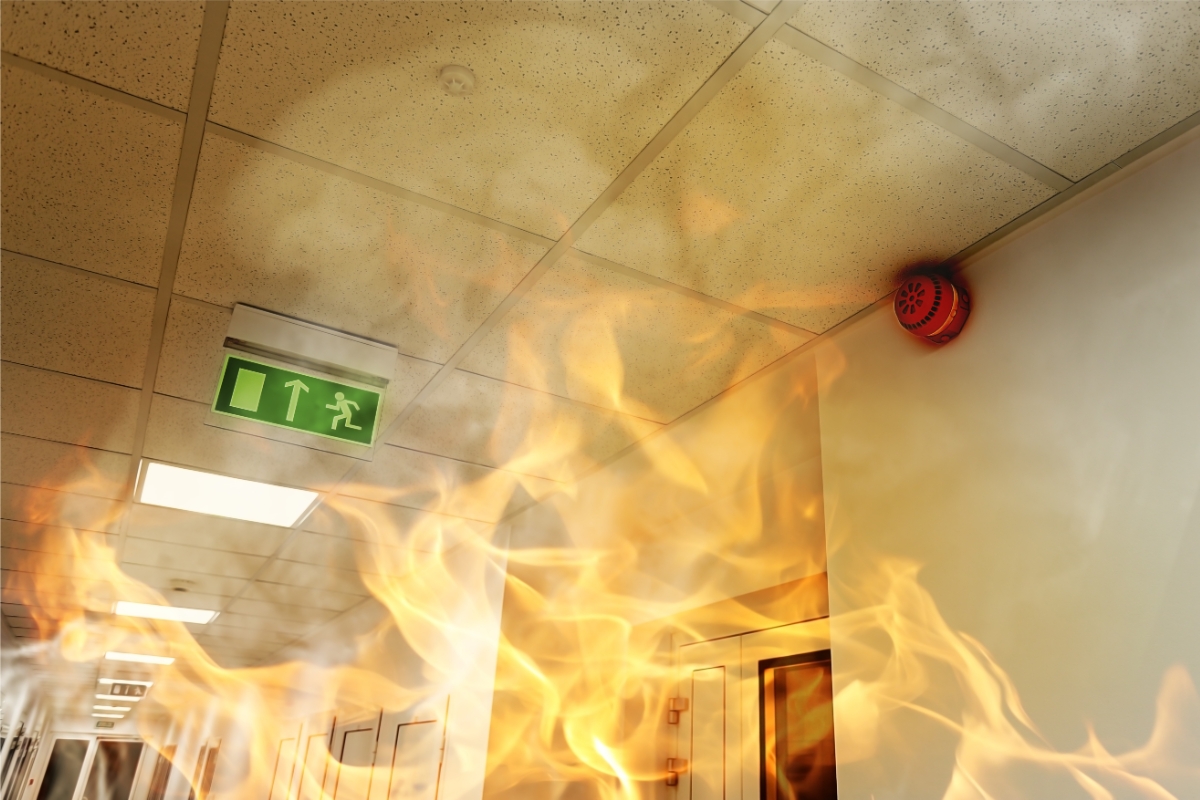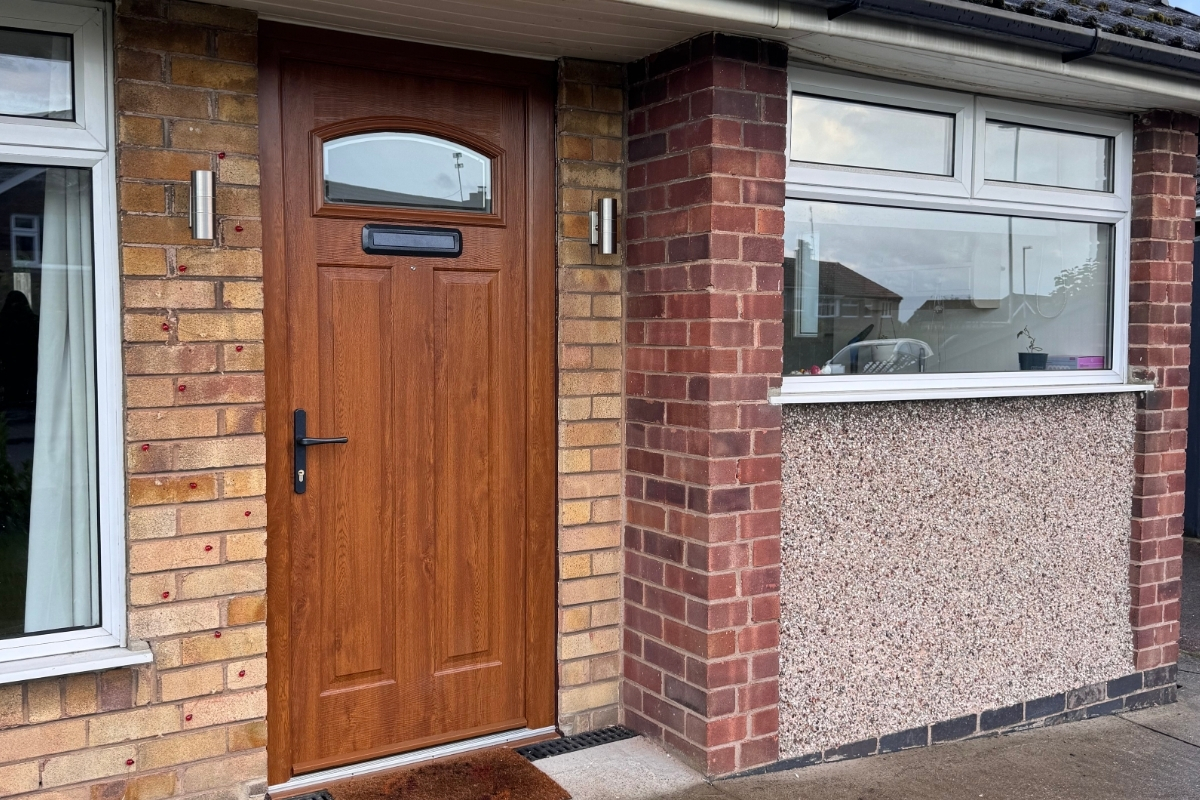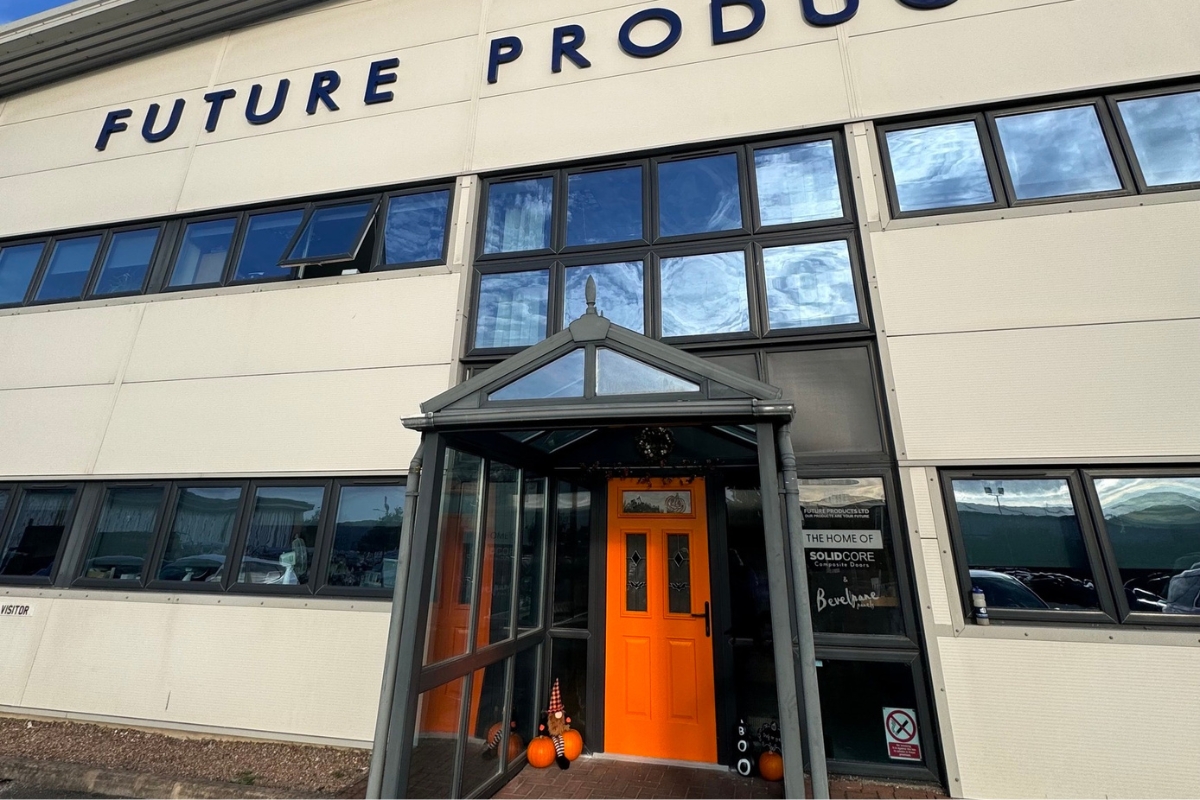Fire doors are a crucial component in the design of buildings, serving as a critical line of defence against the spread of fire and smoke.
Whether you own a home, run a business or are just interested in learning about safety measures, this introduction to fire doors will give you the essential knowledge to understand their vital role in safeguarding lives and property.

What Are Fire Doors?
Fire doors are specially designed and tested to resist fire and the spread of fire and smoke. They provide crucial time for occupants to evacuate and for emergency services to respond. Each certified fire door receives a fire-resistance rating specifying how long it can contain smoke and fire, typically 30 or 60 minutes.
How Are Fire Doors Different From Standard Doors?
Fire doors are constructed from solid materials and reinforced with fire-resistant lining to slow the burning from progressing. They are fixed with intumescent strips that expand to seal gaps between the door and frame. They’re also equipped with self-closing mechanisms to ensure they close automatically, maintaining the barrier during a fire.
What are UK Regulations For Fire Doors?
The regulations for fire doors differ between domestic and commercial buildings. The requirements depend on the usage of the property.
Domestic Setting
In the UK, fire doors are required in specific locations, including buildings with shared housing. For instance, flats with entrances that open into shared or communal areas must have fire doors.
Additionally, multi-storey homes that are more than two storeys high are mandated to have fire doors on every floor that provide access to stairwells and any garages connected to the house and if there is a loft conversion. These fire doors must be kept in good working condition and typically need to provide 30 minutes of fire resistance, often referred to as ‘FD30’ doors.
Commercial Setting
Commercial buildings in the UK, such as offices, shops, hotels and other buildings, must have fire doors that resist fire for 30 to 120 minutes, depending on the building’s layout and potential fire risks.
To comply with The Regulatory Reform (Fire Safety) Order 2005, a ‘responsible person’ is to undertake and record a fire risk assessment and put in place and maintain general fire precautions. Fire doors must be kept clear, labelled on both sides, remain closed and undergo regular inspections and maintenance as part of the building’s fire risk assessments.
Critical Requirements of Fire Doors
To ensure the safety of all building inhabitants and visitors, the guidance for Fire Doors must be followed.
Certification:
This certification involves careful testing of the door’s material, design, and overall integrity to ensure it withstands fire conditions. Certification ensures that the door will perform as expected to prevent the spread of fire and smoke.
Intumescent Strips:
Fire doors must have intumescent strips. When exposed to heat, these strips expand, sealing the gap between the door and its frame. This expansion helps to contain smoke and flames, significantly enhancing the door’s ability to prevent the spread of fire within a building.
Fire Resistance Rating:
The fire resistance rating is crucial. It determines the appropriate type of fire door for different areas of a building. It ensures the doors provide adequate protection based on potential fire exposure and necessary evacuation times.

Clear Labelling and Signage:
Proper labelling and signage on fire doors are essential to maintaining safety standards and compliance. Placing blue signs that say: ‘Fire door keep shut’ can help reinforce the importance of keeping the fire doors closed so that they can effectively serve their purpose.
Self-Closing Mechanism:
Fire doors should be equipped with a self-closing mechanism to ensure they automatically shut and are never to be propped open. This feature is critical to preventing the spread of fire and smoke.
Fire-Resistant Glazing:
If choosing a fire door with windows, it’s essential that the glazing is fire-resistant. This ensures the glass withstands high temperatures without shattering, maintaining the door’s integrity and performance during a fire. Choosing a glazed fire door can allow visibility and light to pass through.
Regular Maintenance:
Regular maintenance of fire doors is crucial to ensure they remain functional and practical. Maintenance checks typically include inspecting the door’s integrity, hardware and seals and ensuring the self-closing mechanism operates correctly. These inspections help identify and rectify any issues that could compromise the door’s performance in a fire.
Accessible:
UK fire doors must be accessible to everyone, including individuals with disabilities. This requires compliance with UK accessibility standards, such as those outlined in the Equality Act 2010, which might specify making reasonable adjustments like handle heights and opening mechanisms to operate the door, ensuring everyone can use the doors quickly.
How Do I Fit A Fire Door?
When fitting a fire door, selecting an appropriate fire-rated door and compatible frame from a fire door manufacturer that has been tested and has passed the latest fire door standards, such as BS476-22 and BS EN 1634-1, is crucial. They will also ensure all the correct seals and hardware are in place.
About the Author

Experienced Director with a demonstrated history of working in the construction industry. Skilled in Negotiation, Business Planning, Customer Service, Sales, and Business Development. Strong information technology professional.







